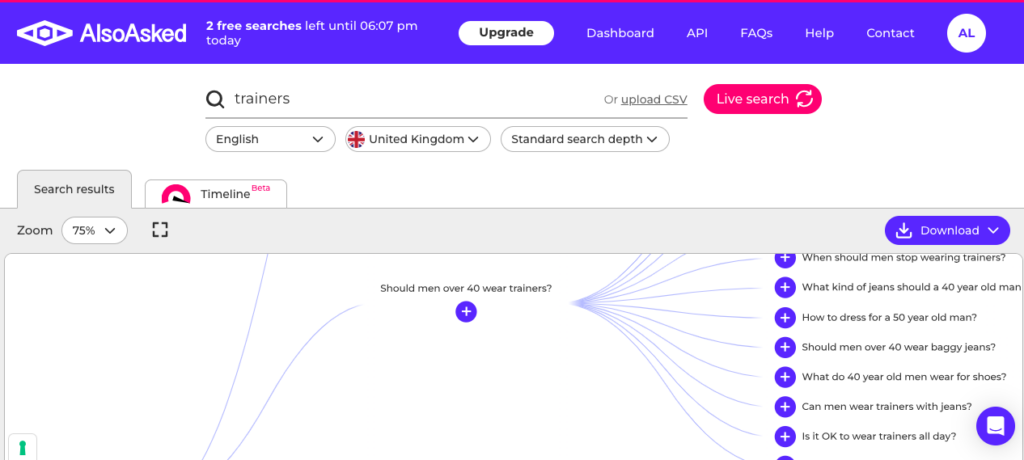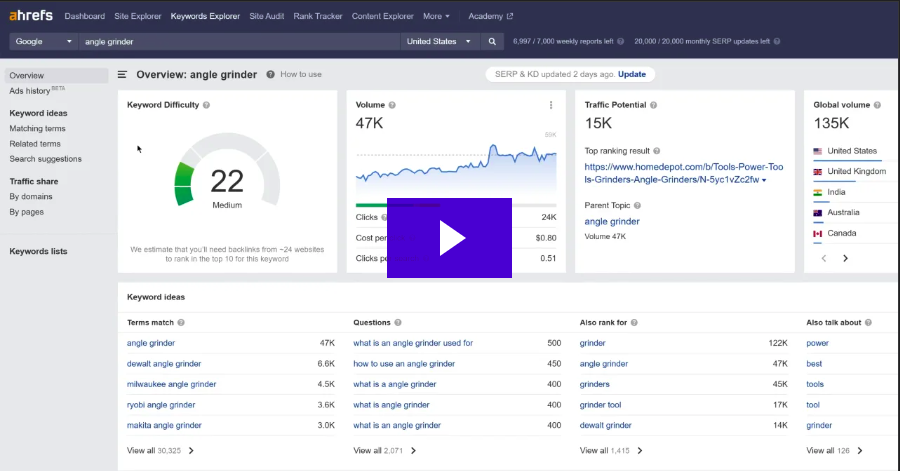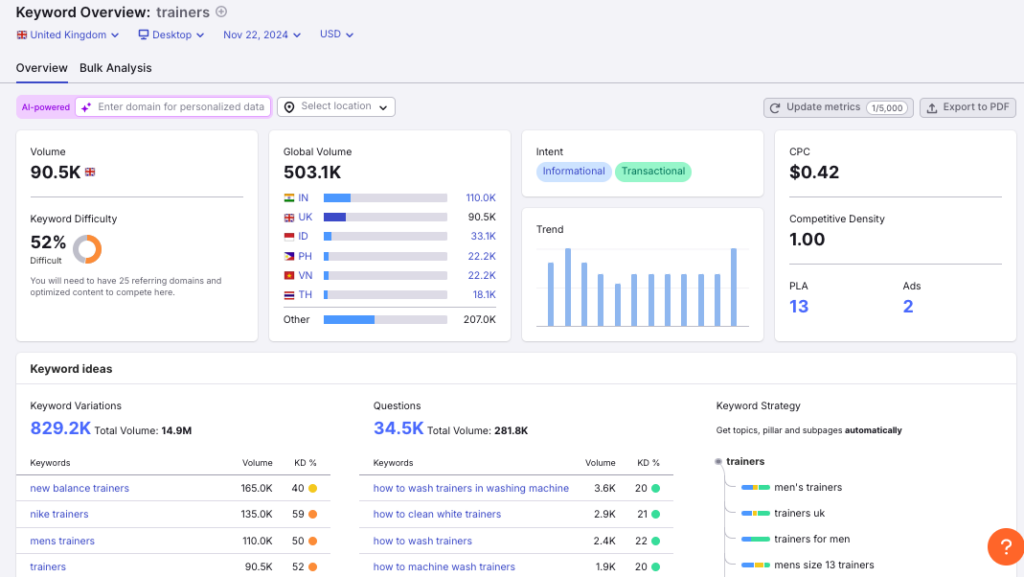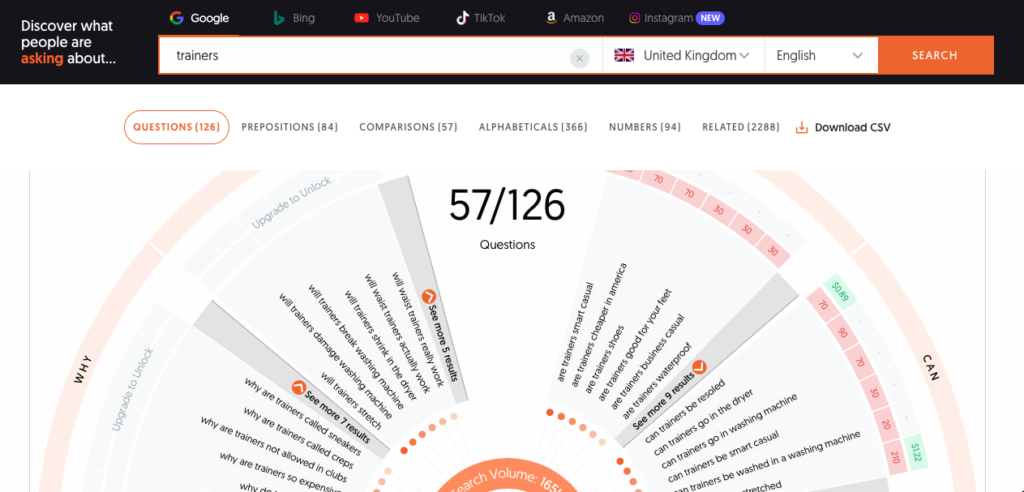Why regional keyword research is crucial for International SEO
When expanding your business into international markets, regional keyword research is one of the most critical elements of your multilingual SEO strategy. Translating your primary market’s keywords into different languages can often result in poor performance. Each country and region has its own search behaviour, language nuances, and user intent, so, it’s important to create a keyword strategy tailored to each market.
In this article, we’ll cover how to perform comprehensive regional keyword research, build a keyword strategy that reflects local search habits, optimise content for different languages and regions, and leverage top searched questions and trends to maximise search visibility and engagement.
1. The importance of regional keyword research
Keyword research forms the foundation of any SEO strategy and is even more critical when dealing with international SEO. Users in different regions not only speak different languages but also search differently. Understanding what terms your target audience uses and how they search for your product or service is essential to building an SEO strategy that drives results.
For example, in the US, users might search for “sneakers” with a focus on brand and performance, whereas in the UK, the term “trainers” is more popular, and searches may prioritise comfort or style. In Spain, users might search for “zapatillas de deporte,” often emphasising price and affordability.
Tailoring your keyword strategy to reflect these differences can significantly impact your SEO success in global markets.
2. How to perform regional keyword research
The key to successful international keyword research is to understand local language variations and search intent. Tools like SEMrush, Ahrefs, and Google Keyword Planner help you conduct research on a regional basis, giving insights into what users in each market are searching for.
Step-by-Step Guide:
- Start with your core keywords: Start by identifying the core keywords you’re already ranking for in your primary market (e.g., “sneakers” in the US).
- Use regional keyword research tools: Use SEMrush or Ahrefs to explore how those keywords perform in different regions. Switch to the local search engine version (e.g., Google.co.uk or Google.es) to filter your search results by country.
- Localise your keywords: Don’t simply translate the keywords. Use tools like Google Keyword Planner to find localised variations of your core terms.
- Analyse regional search volumes and competition: Check the search volume and competition for each localised keyword to determine which terms offer the most potential in each region. For instance, “sneakers” might have high competition in the US but lower competition for similar terms in other regions.
- Explore Long-Tail keywords: Look for long-tail variations of your core terms that better match local search habits. For example, users in Spain might search for “zapatillas de deporte baratas” (cheap sports shoes) instead of the general term “zapatillas de deporte.”
- Refine your list: Based on your research, refine your keyword list to focus on the terms with the highest potential for each market.
Practical example: keyword differences across markets
Let’s take the example of “running shoes.” Here’s how search behaviour might differ across three key markets:
- US: The keyword “sneakers” has 201,000 searches/month with 79% competition.
- UK: The keyword “trainers” sees 90,500 searches/month with 58% competition.
- Spain: “Zapatillas de deporte” has 14,800 searches/month with 34% competition.
Based on this data, if you’re targeting these markets, you should prioritise different keywords to reflect the local search intent.
3. Best practices for international keyword research and implementation
To maximise the impact of your international keyword research, follow these best practices for keyword usage and content optimisation:
1. Focus on user intent first
- Understand user intent: Before using a keyword, make sure you understand what users are looking for. Are they searching for information, making a purchase decision, or looking for reviews? Align your content to meet that intent.
- Categorise keywords by intent: Divide your keyword list into categories like informational, transactional, commercial, and navigational to create content that answers user needs at different stages of their journey.
2. Use keyword variations naturally
- Avoid keyword stuffing: integrate your keywords naturally within your content. focus on readability and context.
- Use synonyms and related terms: search engines like google understand related keywords and concepts. use synonyms and variations to create more comprehensive and engaging content.
- Include long-tail keywords: long-tail keywords often have lower competition and are more aligned with specific user intent. use them in blog posts, faqs, and product descriptions.
3. Optimise content for regional differences
- Customise metadata: Make sure your meta titles, descriptions, and headers use localised keywords. This helps with SEO and also makes your content more relevant to users in different regions. The correct metadata will improve the content click-through rate (CTR).
- Adapt content structure: Consider how content is consumed in different regions. For example, in some markets, detailed guides may perform well, while in others, quick, concise information is preferred.
4. Create and optimise content strategically
- Create new content when needed: If you identify high-potential keywords that you don’t have relevant content for, create new articles, guides, or landing pages. Make sure the content is tailored to the local language and user intent, not simply localised from another language.
- Optimise existing content: If you already have content targeting certain keywords but it’s not performing well, update it to align with user intent and EEAT (Experience, Expertise, Authority, Trustworthiness) guidelines. Make the content more helpful, relevant, and authoritative.
EEAT Best Practices for Content Creation
- Demonstrate expertise: use data, case studies, or expert opinions to add weight your content.
- Show authority: link to authoritative sources and highlight your brand’s credibility.
- Build trust: use clear, accurate, and well-researched content that helps users make informed decisions.
4. Optimising content for different regions
Once you’ve identified the right keywords for each region, the next step is to optimise your content to match local search intent. This involves using the correct language as well as aligning your content with the preferences and expectations of users in each market.
Step-by-Step Guide:
- Localise your content: adjust your content to reflect local terminology and search behaviour. for example, if your us site targets “sneakers,” your uk version should use “trainers” in both the content and meta tags.
- Tailor content to user intent: focus on what matters most to users in each market. for example, users in the us might care about brand performance, while users in spain might prioritise affordability.
- Adjust content structure: the way content is structured can also differ between regions. users may prefer more detailed product descriptions in some markets, while others might favour quick comparisons or highlights.
- Localise metadata and headers: make sure meta titles, descriptions, and headers include the correct localised keywords. example: use “buy sneakers online” for the us and “cheap trainers for sale” for the uk.
- Leverage local case studies and examples: use locally relevant case studies or success stories to resonate more with users in specific regions and help build trust and engagement.
- Avoid over-optimisation: while it’s important to use localised keywords, avoid stuffing your content with too many keywords. focus on readability and natural use of the terms.
5. Leveraging semantic seo for international content
Beyond keyword optimisation, semantic SEO focuses on understanding the intent behind the search and using related keywords, phrases, and context to improve relevance. For international SEO, this means using the right local keywords and expanding your content to cover related topics that local users might be interested in.
Step-by-Step Guide:
- Identify related keywords: use tools like ahrefs or semrush to identify related keywords and topics relevant to local users. for instance, users searching for “trainers” in the uk might also be interested in “best gym shoes” or “lightweight running shoes.”
- Expand content to include contextual information: create content that goes beyond just targeting keywords, like articles that address local trends, reviews, or comparisons that are popular in the region.
- Use structured data: implement structured data (schema) to help search engines understand your content better. this can be especially useful for highlighting reviews or comparisons that are relevant to local users.
- Monitor user behaviour and refine content: use google analytics or ga4 to monitor how users in each region engage with your content. adjust your strategy based on which pages perform best and where users drop off.
6. Continuous optimisation and tracking performance
International SEO is an ongoing process, and once your content is optimised for different regions, it’s important to continuously track performance and refine your strategy based on what works best in each market.
Step-by-Step Guide:
- Set up regional rank tracking: use tools like semrush or ahrefs to track how your keywords are ranking in each market. monitor changes in ranking positions, traffic, and conversions.
- Analyse regional competitors: keep an eye on local competitors to see how they perform for similar keywords. use this information to adjust your strategy.
- Adjust based on performance: if certain pages are not performing well in specific regions, revisit your keyword research and content strategy to make sure you’re targeting the right terms.
- Use a/b testing for regional content: test different versions of content to see which resonates best with users in each market. an example of this is testing different headlines or product descriptions for different regions.
- Monitor google search console: regularly review your google search console data for each region to identify any issues with indexing, search performance, or click-through rates.

7. Identifying top searched questions and trends
Identifying the top searched questions users are asking in each region is crucial for capturing search intent and creating content that directly addresses those queries. By answering common user questions, you can position your content as more relevant, drive higher engagement, and increase the likelihood of ranking in People Also Ask boxes or featured snippets.
Tools like SEMrush, People Also Ask tools and Ahrefs provide valuable data on commonly searched questions for your target keywords. In addition, using Google Trends with regional filters allows you to track the latest search trends and questions in specific markets.

Using Ahrefs to identify top questions
Unlike SEMrush, Ahrefs often uncovers more niche or long-tail questions because of its comprehensive keyword database and focus on organic traffic potential. By exploring the Questions feature in Ahrefs, you can find questions your target audience is asking, but with a different focus from SEMrush, which can help you target more specific user queries that may not always appear in SEMrush’s broader results.
Step-by-Step Guide:
- Enter your target keyword: in Ahrefs’ keyword explorer, enter the localised keyword for a specific market. for this example, we use “zapatillas de deporte” for the Spanish market.
Example of related questions in ahrefs:- “¿cuáles son las mejores zapatillas de deporte para correr maratones?” (what are the best running shoes for marathons?)
- “¿qué zapatillas de deporte son más cómodas para largas distancias?” (what are the most comfortable deporte shoes for long distances?)
- “¿cómo elegir zapatillas de deporte?” (how to choose running shoes?)
- Explore keyword difficulty and search volume: Ahrefs provides detailed metrics on keyword difficulty, search volume, and traffic potential.
- Prioritise questions with low competition: based on the data from Ahrefs, prioritise the questions with a good balance of search volume and low competition.
- Develop content around these questions: create content specifically designed to answer these user queries.
- Monitor organic traffic: once the content is live, use ahrefs to track the organic traffic that your content generates and whether it ranks for these specific user questions.

Using SEMrush to identify top questions
Unlike Ahrefs, SEMrush typically offers broader insights into high-volume questions related to your primary keywords. It helps you capture a wider array of questions that users are asking but may be more competitive to rank for.
Step-by-Step Guide:
- Identify question-based keywords in SEMrush: enter your primary keyword for a specific region (e.g., “running shoes” in the us). navigate to the questions section related to this keyword.
Example in SEMrush:- for the keyword “running shoes,” SEMrush might show high-volume related questions like:
- “what are the best running shoes for beginners?”
- “how should running shoes fit?”
- “what are the best running shoes for flat feet?”
- for the keyword “running shoes,” SEMrush might show high-volume related questions like:
- Analyse search volume and competition: SEMrush will provide data on search volume and competition for these questions, so you can prioritise the ones most relevant to your strategy. for example, “what are the best running shoes for beginners?” might have a very high search volume but also high competition.
- Create content to answer these questions: develop content (like blog posts or faq sections) that directly answers these high-volume questions. since semrush often focuses on broader, higher-volume queries, your content may need to target multiple competitive keywords.
- Monitor PAA performance: use SEMrush to track whether your content is being picked up in people also ask boxes or featured snippets. adjust your content as needed to improve your chances of ranking in these search features.

Using People Also Ask tools to generate new content ideas
Beyond SEMrush and Ahrefs, People Also Ask tools, like Answer the Public or AlsoAsked, can provide deeper insights into questions users ask across different regions. These tools show a web of related questions that stem from your main search term.
Step-by-Step Guide:
- Enter your core keyword: start by entering a keyword like “trainers” or “sneakers” into a tool like Answer the Public or Alsoasked. the tool will generate a series of related questions users are searching for.
Example: for “trainers,” you might get questions like:- “what are the best trainers for running?”
- “how do i clean my trainers?”
- “which trainers are best for flat feet?”
- Review question variations across regions: if you are targeting multiple regions, make sure to check how these questions vary. for example, in the uk, users may search for “best trainers for running,” while in the us, they may ask “best sneakers for running.”
- Develop content around these questions: use the questions generated by these tools to develop blog posts, faqs, or even product comparisons that answer these queries directly. make sure your content is optimised for the keywords embedded in these questions.

Using Google Trends to identify emerging market trends
Google Trends is an excellent tool for tracking emerging search trends and top questions in specific regions. By applying regional filters, you can see which keywords, questions, or topics are becoming more popular in a particular market.
Step-by-Step Guide:
- Set your region and timeframe: In Google Trends, choose the region you’re interested in (e.g., UK, US, Spain) and set the timeframe (e.g., past 30 days, past year).
Example: If you search for “running shoes” in the UK over the last 30 days, Google Trends might show an increase in searches for “best trainers for marathon training.” - Identify trending queries: Google Trends will show the top rising queries and related topics that users in that region are searching for, which is invaluable for keeping your content fresh and relevant.
- Create content to match trends: If you notice a surge in searches for specific queries, like “best trainers for marathon runners” in the UK, consider creating or updating content around that topic to capture the trend while it’s still rising.
- Refine your content strategy based on trends: Regularly check Google Trends to stay ahead of seasonal or emerging trends. For instance, users might search for different products during holiday seasons or around events like marathons or Black Friday.
Combining tools to identify and leverage top questions
Let’s say you’re a fitness brand expanding into the UK market. You might start by using SEMrush to find high-volume questions related to “trainers” and discover that users are frequently asking:
- “What are the best trainers for running long distances?”
- “How should I choose running trainers?”
Next, using Ahrefs, you dig deeper into more niche, long-tail questions specific to the UK, like:
- “Which running trainers are best for marathon training?”
- “How do I know if my running trainers are the right fit?”
Finally, by checking Google Trends, you discover a rising interest in searches for “best lightweight trainers for marathons” in the UK. Armed with this information, you create blog content and product pages that answer these top questions, optimising for short and long-tail queries.
Regional keyword research and content optimisation are essential for international SEO success. By understanding the differences in how users search across different regions, you can tailor your keyword strategy and content to meet local search intent, improving your site’s visibility and performance globally.
Key takeaways:
- Conduct comprehensive regional keyword research using tools like SEMrush and Ahrefs to find localised keywords and search volumes.
- Optimise content to reflect local search intent and language nuances.
- Use semantic SEO to expand your content beyond keywords, focusing on related topics and user intent.
- Regularly track and adjust your strategy using things like Google Trends, People Also Ask tools, and regional rank tracking from SEMrush and Ahrefs.
By following these steps and best practices, you can build a robust international SEO strategy that drives more traffic, leads, and conversions from global markets.



